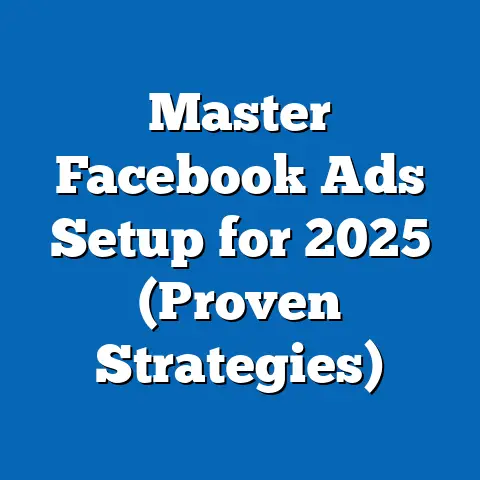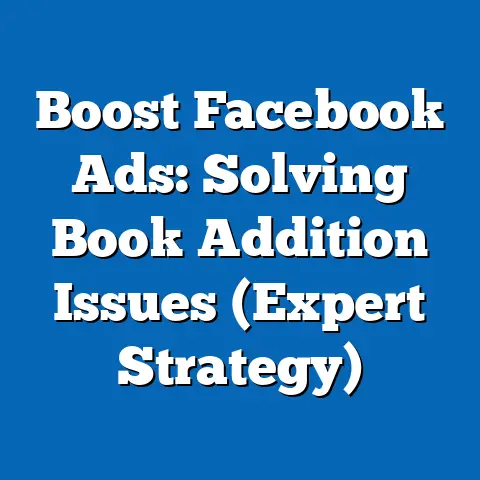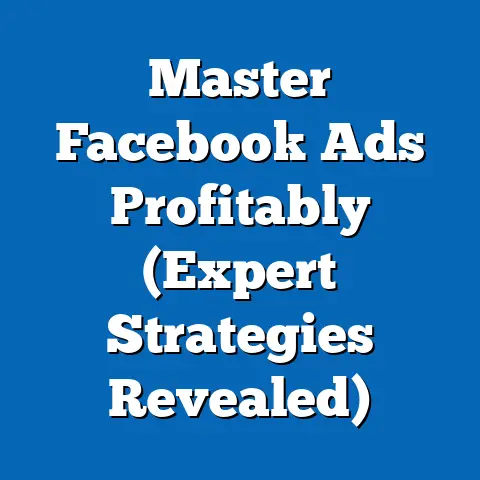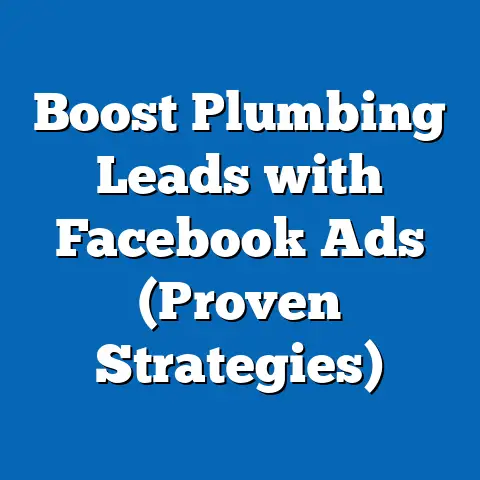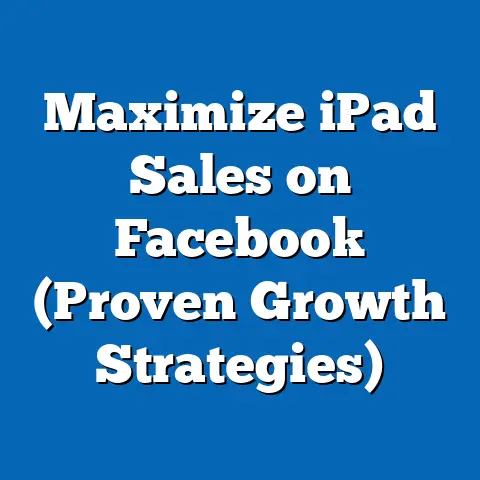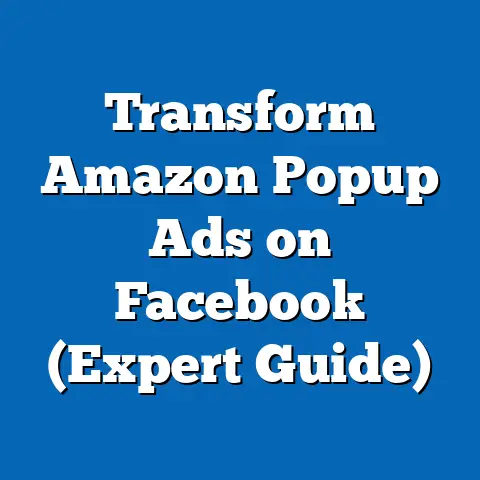Unlock Facebook Lead Ads Data (Expert Guide)
Just as Pandora unleashed a world of challenges and opportunities when she opened the box, marketers today face a similar dilemma when unlocking the vast potential of Facebook Lead Ads. These ads are not just a tool; they are a gateway to a treasure trove of data that can transform marketing strategies and drive business growth. For years, I’ve helped businesses navigate the complexities of Facebook advertising, and I can tell you firsthand, the goldmine of information hidden within Lead Ads is often overlooked. Let’s unlock it together.
Introduction
Facebook Lead Ads have become a cornerstone of modern digital marketing, offering a streamlined and efficient way to capture valuable leads directly within the Facebook platform. They’re a far cry from traditional methods that require sending potential customers to external landing pages, often resulting in drop-offs and lost opportunities. The beauty of Lead Ads lies in their simplicity and convenience, allowing users to submit their information with just a few taps, all without ever leaving the comfort of their Facebook feed.
The digital landscape has undergone a seismic shift in recent years, particularly with the onset of the COVID-19 pandemic. This global event accelerated the adoption of online marketing strategies across industries, making effective lead generation more critical than ever. Businesses were forced to adapt quickly, and those who embraced platforms like Facebook and mastered the art of Lead Ads found themselves at a significant advantage. I’ve seen businesses completely transform their lead generation processes, moving from struggling with outdated methods to thriving with targeted, data-driven Facebook campaigns.
This article serves as your expert guide to unlocking and leveraging the full potential of Facebook Lead Ads data. I’ll take you through the intricacies of setting up campaigns, understanding the importance of data, accessing and interpreting key metrics, and ultimately, using those insights to drive better results. My goal is to equip you with the knowledge and tools you need to maximize the impact of your Facebook Lead Ads and achieve your marketing objectives.
Understanding Facebook Lead Ads
Facebook Lead Ads are a specialized ad format designed to collect contact information from potential customers directly within the Facebook platform. Unlike traditional ads that redirect users to an external landing page, Lead Ads allow users to submit their details, such as name, email address, phone number, and other relevant information, directly through a pre-populated form. This seamless user experience significantly reduces friction and increases conversion rates.
One of the key differentiators of Lead Ads is their user-friendliness. The forms are pre-filled with information that users have already shared with Facebook, making the submission process incredibly quick and easy. This eliminates the need for users to manually type in their details, which can be a significant barrier to conversion.
The effectiveness of Lead Ads in generating high-quality leads is well-documented. Studies have shown that Lead Ads can generate leads at a significantly lower cost per lead (CPL) compared to other forms of advertising. I’ve personally seen CPLs drop by as much as 50% when switching from traditional landing page-based campaigns to Lead Ads. This is due to the streamlined user experience and the ability to target highly specific audiences on Facebook.
Takeaway: Facebook Lead Ads offer a user-friendly and efficient way to capture leads directly within the platform, resulting in higher conversion rates and lower costs.
Setting Up Your Facebook Lead Ads Campaign
Creating a successful Facebook Lead Ads campaign requires careful planning and execution. Here’s a step-by-step guide to get you started:
-
Define Your Campaign Objective: The first step is to clearly define your campaign objective. What do you want to achieve with your Lead Ads? Are you looking to generate leads for a specific product or service? Are you trying to build your email list? Having a clear objective will help you tailor your campaign to the right audience and optimize your ad copy and visuals.
-
Select Your Target Audience: Facebook’s targeting capabilities are incredibly powerful, allowing you to reach highly specific audiences based on demographics, interests, behaviors, and more. Take the time to research your target audience and create detailed audience segments within Facebook Ads Manager. I often start by creating several different audience segments and then A/B test them to see which ones perform best.
-
Craft Compelling Ad Copy and Visuals: Your ad copy and visuals are what will grab your target audience’s attention and entice them to click on your Lead Ad. Use clear and concise language that highlights the benefits of your offer. Use high-quality images or videos that are visually appealing and relevant to your target audience.
-
Design Your Lead Form: The Lead Form is where users will submit their information. Keep the form as simple and user-friendly as possible. Only ask for the information that you absolutely need. I’ve found that shorter forms tend to have higher conversion rates. You can also customize the form with your own branding and add a privacy policy link.
-
Choose the Right Call-to-Action (CTA): Your CTA is what will prompt users to submit their information. Use a clear and compelling CTA that tells users exactly what you want them to do. Some popular CTAs for Lead Ads include “Sign Up,” “Learn More,” “Get a Quote,” and “Download Now.”
Define Your Campaign Objective: The first step is to clearly define your campaign objective. What do you want to achieve with your Lead Ads? Are you looking to generate leads for a specific product or service? Are you trying to build your email list? Having a clear objective will help you tailor your campaign to the right audience and optimize your ad copy and visuals.
Select Your Target Audience: Facebook’s targeting capabilities are incredibly powerful, allowing you to reach highly specific audiences based on demographics, interests, behaviors, and more. Take the time to research your target audience and create detailed audience segments within Facebook Ads Manager. I often start by creating several different audience segments and then A/B test them to see which ones perform best.
Craft Compelling Ad Copy and Visuals: Your ad copy and visuals are what will grab your target audience’s attention and entice them to click on your Lead Ad. Use clear and concise language that highlights the benefits of your offer. Use high-quality images or videos that are visually appealing and relevant to your target audience.
Design Your Lead Form: The Lead Form is where users will submit their information. Keep the form as simple and user-friendly as possible. Only ask for the information that you absolutely need. I’ve found that shorter forms tend to have higher conversion rates. You can also customize the form with your own branding and add a privacy policy link.
Choose the Right Call-to-Action (CTA): Your CTA is what will prompt users to submit their information. Use a clear and compelling CTA that tells users exactly what you want them to do. Some popular CTAs for Lead Ads include “Sign Up,” “Learn More,” “Get a Quote,” and “Download Now.”
The right CTA can significantly influence lead generation. For example, if you’re offering a free ebook, “Download Now” is a more compelling CTA than “Learn More.” I always recommend testing different CTAs to see which ones perform best for your target audience.
Takeaway: A well-planned and executed Lead Ads campaign requires a clear objective, targeted audience, compelling ad copy and visuals, a simple Lead Form, and a strong call-to-action.
The Importance of Data in Lead Ads
Data is the lifeblood of any successful marketing campaign, and Facebook Lead Ads are no exception. The data collected through Lead Ads provides valuable insights into your target audience, the effectiveness of your ad campaigns, and the overall performance of your marketing efforts.
Lead Ads collect a wide range of data, including:
- Demographic Information: Age, gender, location, education level, and other demographic details.
- User Interests: Interests and hobbies based on users’ Facebook activity.
- Engagement Metrics: Data on how users interact with your ads, such as clicks, impressions, and conversion rates.
- Custom Questions: You can also add custom questions to your Lead Form to collect specific information that is relevant to your business. For example, if you’re a real estate agent, you might ask users about their budget or their desired location.
This data can inform marketing strategies in several ways:
- Audience Segmentation: You can use demographic and interest data to segment your audience and create more targeted ad campaigns.
- Content Personalization: You can use the data to personalize your ad copy and visuals, making them more relevant to each audience segment.
- Campaign Optimization: You can use engagement metrics to optimize your campaigns, identifying what’s working and what’s not.
I’ve seen businesses completely transform their marketing efforts by leveraging the data collected through Lead Ads. By understanding their target audience better, they’ve been able to create more effective ad campaigns and generate higher-quality leads.
Takeaway: Data is crucial for optimizing your Lead Ads campaigns, understanding your target audience, and personalizing your marketing efforts.
- Access Facebook Ads Manager: Log into your Facebook Ads Manager account.
- Navigate to the Campaigns Tab: Click on the “Campaigns” tab to view your active and past campaigns.
- Select Your Lead Ads Campaign: Select the specific Lead Ads campaign that you want to analyze.
- View Ad Performance Metrics: Facebook Ads Manager provides a wide range of metrics, including impressions, clicks, cost per click (CPC), cost per lead (CPL), conversion rate, and more.
- Download Lead Data: You can download your lead data in CSV or Excel format. This will allow you to analyze the data in more detail and create custom reports.
Key metrics to focus on include:
- Conversion Rate: The percentage of users who submit their information after clicking on your Lead Ad. A higher conversion rate indicates that your ad copy and visuals are resonating with your target audience.
- Cost Per Lead (CPL): The average cost of acquiring a lead through your Lead Ad. A lower CPL indicates that your campaign is efficient and cost-effective.
- Lead Quality: Not all leads are created equal. It’s important to track the quality of your leads and identify which leads are most likely to convert into customers. I often use a lead scoring system to prioritize leads based on their likelihood to convert.
You can set up custom reports and dashboards within Facebook Ads Manager to track your key metrics over time. This will allow you to identify trends and patterns, and make data-driven decisions about your campaigns.
Takeaway: Accessing and interpreting your Lead Ads data through Facebook Ads Manager is crucial for optimizing your campaigns and maximizing your ROI. Focus on key metrics like conversion rate, CPL, and lead quality.
Leveraging Data for Better Results
Once you’ve unlocked your Lead Ads data, the real work begins. The key is to use that data to optimize your future campaigns and drive better results. Here are some strategies for leveraging your data:
-
A/B Testing: A/B testing involves creating two or more variations of your ad copy, visuals, or Lead Form, and then testing them against each other to see which one performs best. Use the data you’ve collected to inform your A/B testing. For example, if you’ve found that a certain image resonates well with your target audience, use that image in your A/B tests.
-
Retargeting: Retargeting involves showing ads to users who have previously interacted with your Lead Ads. This is a great way to re-engage leads who haven’t yet converted. For example, you could show a retargeting ad to users who clicked on your Lead Ad but didn’t submit their information.
-
Nurturing: Nurturing involves sending a series of emails or other communications to your leads, providing them with valuable information and building a relationship with them. Tailor your nurturing campaigns to the specific interests and needs of your leads. For example, if a lead expressed interest in a specific product, send them information about that product and related products.
A/B Testing: A/B testing involves creating two or more variations of your ad copy, visuals, or Lead Form, and then testing them against each other to see which one performs best. Use the data you’ve collected to inform your A/B testing. For example, if you’ve found that a certain image resonates well with your target audience, use that image in your A/B tests.
Retargeting: Retargeting involves showing ads to users who have previously interacted with your Lead Ads. This is a great way to re-engage leads who haven’t yet converted. For example, you could show a retargeting ad to users who clicked on your Lead Ad but didn’t submit their information.
Nurturing: Nurturing involves sending a series of emails or other communications to your leads, providing them with valuable information and building a relationship with them. Tailor your nurturing campaigns to the specific interests and needs of your leads. For example, if a lead expressed interest in a specific product, send them information about that product and related products.
I’ve seen businesses achieve significant improvements in their lead generation and conversion rates by implementing these strategies. By using data to optimize their campaigns and nurture their leads, they’ve been able to generate more high-quality leads and convert them into paying customers.
Takeaway: Leverage your Lead Ads data to optimize your campaigns through A/B testing, retargeting, and lead nurturing.
Conclusion
In conclusion, Facebook Lead Ads offer a powerful and efficient way to generate leads directly within the Facebook platform. However, the true potential of Lead Ads lies in the data they provide. By understanding the importance of data, accessing and interpreting key metrics, and leveraging those insights to optimize your campaigns, you can unlock the full power of Facebook Lead Ads and drive better results.
Just as Pandora’s Box contained both challenges and opportunities, unlocking valuable data from Facebook Lead Ads may require effort and analysis. However, the potential rewards for marketers are immense. By embracing the insights gained from your Lead Ads data and using them to inform your marketing strategies, you can achieve greater success and drive business growth. So, go ahead, unlock your data and let it guide you to marketing success!

